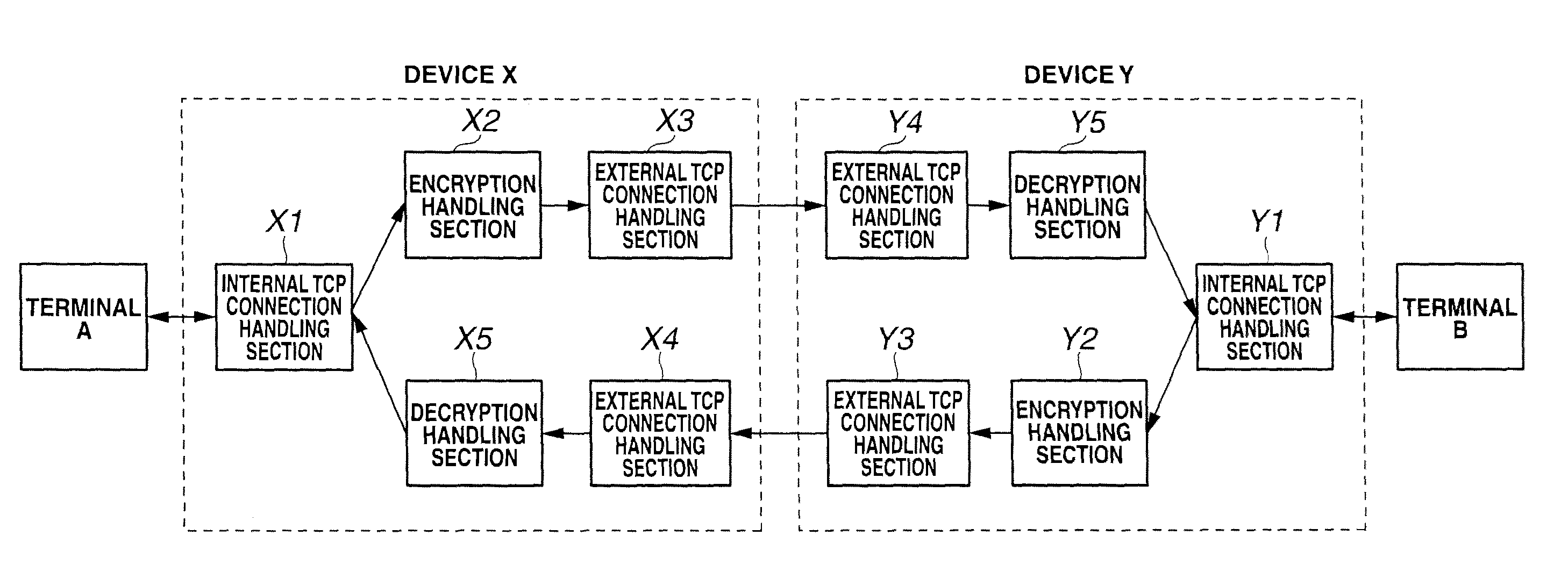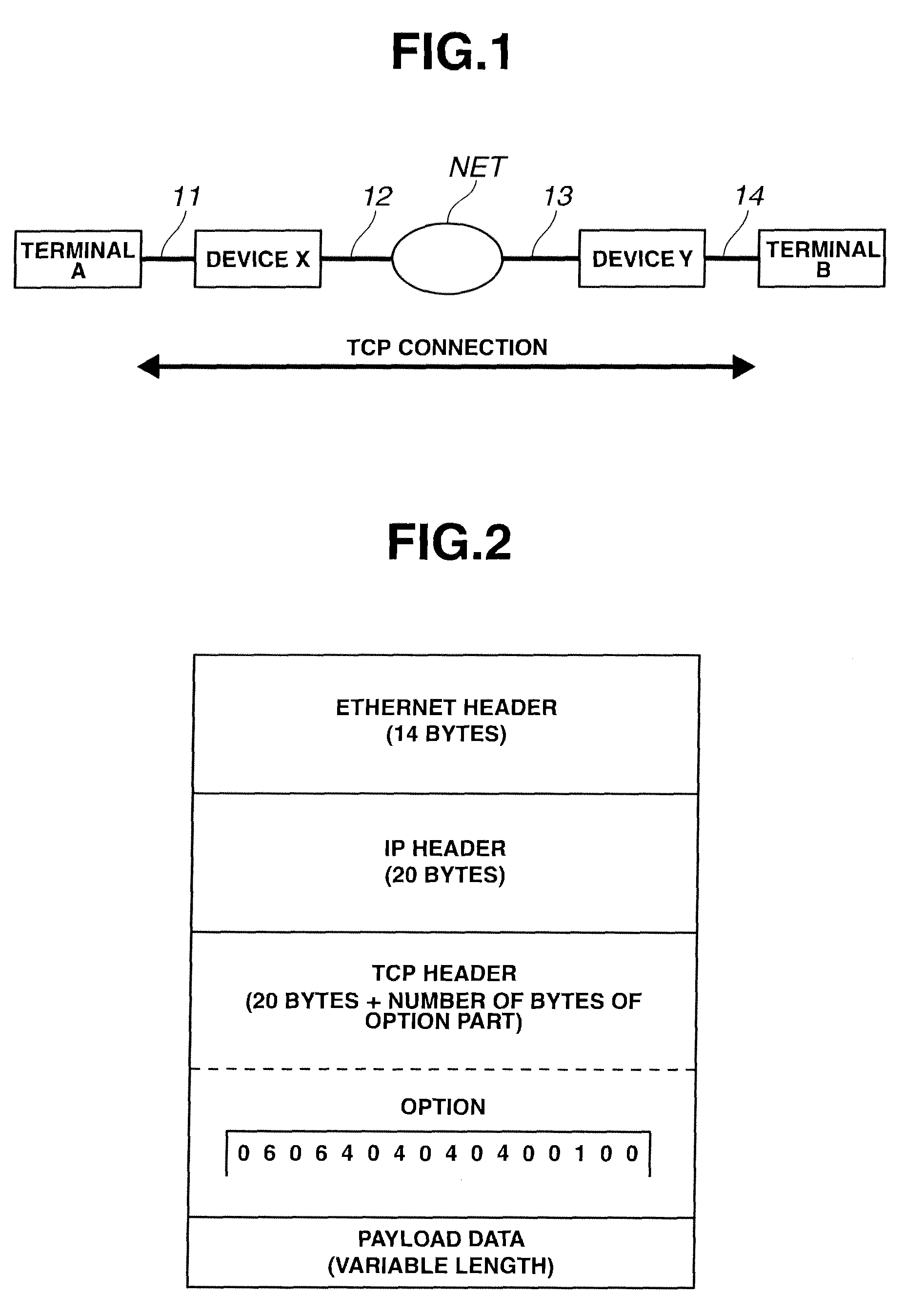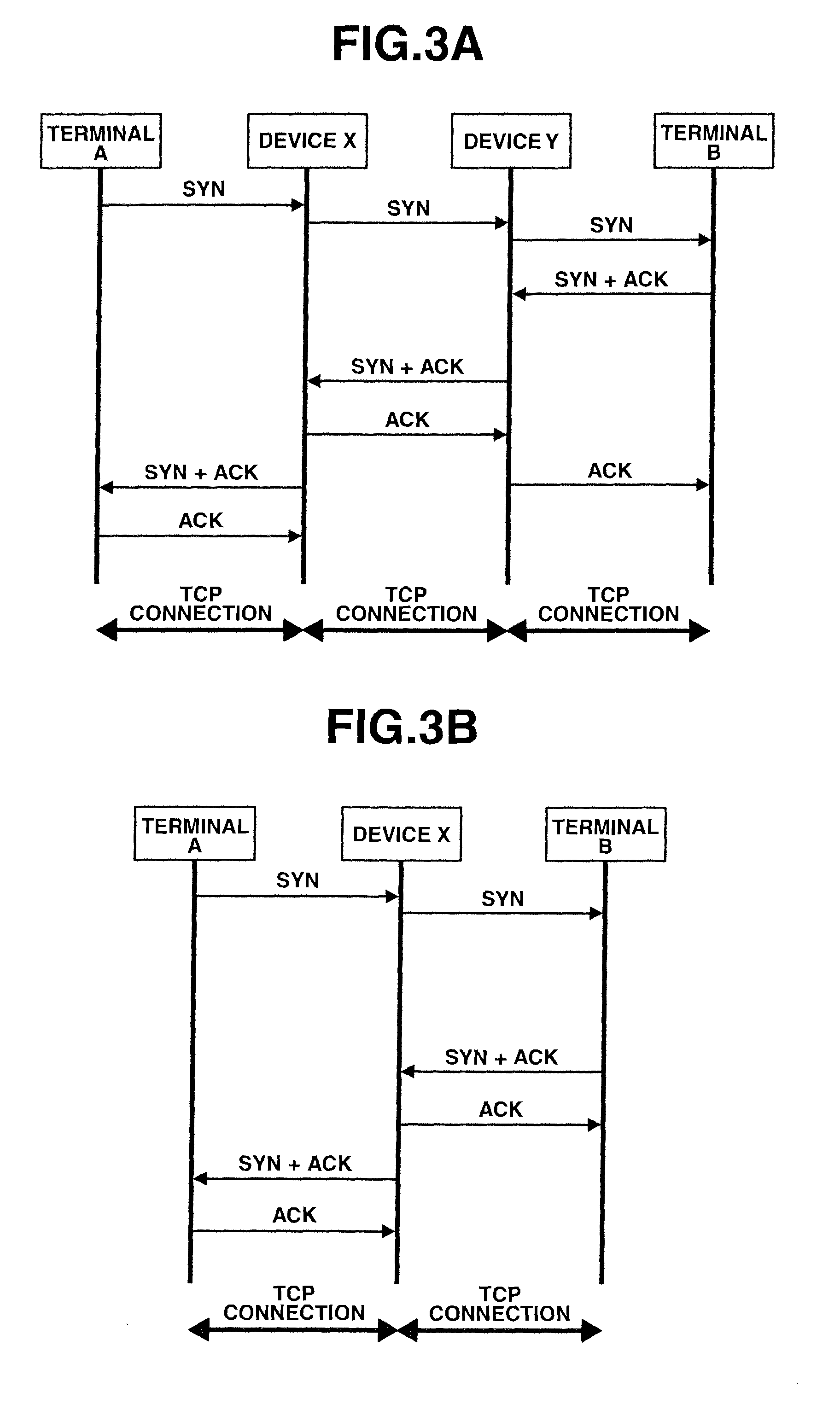TCP communication scheme
a communication scheme and vpn technology, applied in the field of tcp communication schemes, can solve the problems of high cost in the case of extension of the vpn section, and achieve the effects of preventing direct attacks from hackers, free choice, and reducing the implementation cos
- Summary
- Abstract
- Description
- Claims
- Application Information
AI Technical Summary
Benefits of technology
Problems solved by technology
Method used
Image
Examples
embodiment 1
[0042]FIG. 1 is a network configuration diagram showing a TCP communication scheme according to an embodiment 1. In FIG. 1, terminals A, B are endpoint terminals located on opposite ends of TCP communication. Terminals A, B are connected to relay devices X, Y through transmission lines 11, 14, respectively. Relay devices X, Y are connected to a network NET through transmission lines 12, 13, respectively.
[0043]Relay devices X, Y are provided and inserted in a section between terminals A, B between which communication has been made previously. Relay devices X, Y are allocated with no IP addresses. For ease of explanation, terminals A, B are henceforth referred to as active side and passive side of TCP connection, respectively.
[0044]Relay devices X, Y intercept TCP connection between terminals A, B, and divide same into three TCP connections, and establish TCP communication.
[0045]The following describes operations of active-side and passive-side relay devices X, Y.
[0046](1) Operation o...
embodiment 2
[0072]An embodiment 2 employs the TCP options of type codes 06, 07. Type code 06 is “Echo (obsoleted by option 8) RFC1072”. Type code 07 is “Echo Reply (obsoleted by option 8) RFC1072”.
[0073]FIG. 11 is a diagram showing a sequence in standard mode of use of the TCP options of type codes 06 and 07. By definition, the TCP options of code types 06 and 07 are used for measuring a reply period in TCP congestion control. For example, when the sender device (relay device X) shown in FIG. 2 sends to the opposite target device (relay device Y) a packet in which an arbitrary number is set in type code 06, then the target device which has received the packet sends back to the sender device a packet in which the arbitrary number is set in type code 07. The sender device measures time when the packet in which the same number is set is reached, and uses it in congestion control.
[0074]Proactive information exchange is implemented by mutually sending an arbitrary number (packet) provided with a spe...
embodiment 3
[0093]An embodiment 3 employs the TCP option of type 19. Type 19 is “MD5 Signature Option RF2385”.
[0094]FIG. 15 is a diagram showing a sequence in standard mode of use of the TCP option of type 19. By definition, type 19 is an option intended for BGP (Border Gateway Protocol), which is used for signature based on MD5 hash value of the TCP segment. Every TCP segment flowing over a BGP session is added with this option for protecting the BGP session.
[0095]Embodiment 3 implements proactive information exchange by mutually sending an arbitrary number provided with a specific meaning, by using the function of the TCP option shown in FIG. 15. However, this scheme cannot be used over BGP sessions, because this scheme is in conflict with the standard usage over BGP sessions. Accordingly, this scheme is limited to sessions except BGP sessions. The following describes a case in which relay device X confirms or authorizes by the above method that relay device Y having a similar function exists...
PUM
 Login to View More
Login to View More Abstract
Description
Claims
Application Information
 Login to View More
Login to View More - R&D
- Intellectual Property
- Life Sciences
- Materials
- Tech Scout
- Unparalleled Data Quality
- Higher Quality Content
- 60% Fewer Hallucinations
Browse by: Latest US Patents, China's latest patents, Technical Efficacy Thesaurus, Application Domain, Technology Topic, Popular Technical Reports.
© 2025 PatSnap. All rights reserved.Legal|Privacy policy|Modern Slavery Act Transparency Statement|Sitemap|About US| Contact US: help@patsnap.com



